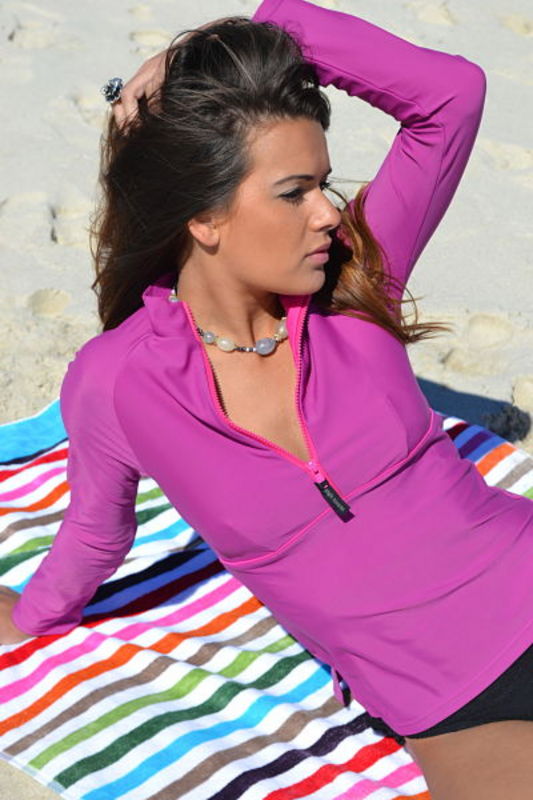Especially when living here and wearing shorts and singlets nonstop, it sometimes bothers me that I look like I’m the captain of a boat carrying heaps of lime (and I mean the white hydrated one!)… but it doesn’t bother me so much that I’d even consider going to the beach to fry my skin as Australia is the world-leader in skin cancer statistics due to the extremely harsh sunlight and holes in the ozone… which is why we Scandies should go to extreme measures to protect our skin; there is absolutely no such thing as safe tan – tanned skin equals with damaged skin and, unfortunately, your skin won’t ever forget. Also, sunblock doesn’t equal with safe tanning – if you want to be safe, cover yourself with clothes – luckily this is pretty much what many Australians do when they go to the beach. Even I won’t go there anymore without at least my long-sleeved rashie and sometimes I also choose to wear boardshorts in the water. They don’t just protect from the sun but also from all stingers in the water!
I often hear complaints about how you can’t find sunscreen with a higher SPF than 30 in Australia. Well, you can… but here companies aren’t allowed to label them with a higher SPF; that’s why most sunscreens are labelled as 30+ – this is because it’s sometimes unsure how effective sunscreens really are (as it depends on e.g. how much you apply) and so that people wouldn’t get a false idea of being safe. All in all, please don’t wear a lower SPF while on this continent. And stay far away from oils – you need UVA and UVB protection! A tan isn’t worth of getting skin cancer!

A rashie really doesn’t look that bad!
Well. Ok. What if you still want a tan? Self-tanners are safe, right? Well, not exactly. At the moment there is confusion about whether it is safe to use self-tanning products – at the moment there are actually official warnings about self-tan-sprays because of inhaling the fumes. Also, for the first time, it seems unclear whether lotions are safe either – however, luckily (?), this applies only to the ones that include synthetic DHA.

DHA is the ingredient that creates the tan effect. Most self-tanners use a synthetic DHA which should be avoided. Luckily there are natural products that use DHA derived from natural ingredients. Ok, why choose the natural, often more expensive one? Because natural DHA reacts only to the amino acids in the dead top layers of skin and at the moment there is no certainty that the chemical-based self-tanners don’t go further. There has been discussion that because in chemical based products chemicals are often added to weaken the skin’s surface which is why the product will be absorbed into the bloodstream and… well, one doesn’t need to be a scientist to see that this is a very bad thing.
Just because of it’s rocking name… “How Now Brown Cow”-self-tanner.
Safer self-tanners include e.g. products from Lavera, Eco-Tan and MooGoo. But all in all, it’s important to read the ingredients list and avoid products with phenoxyethanol, propylene glycol, Parabens, FD&C colouring, fragrance and anything with PEG in the name.
Anyway, the lecture has finished! Safe tanning to all of you & love the skin you’re in!
Ps. don’t forget that sunshine also makes your skin look older… A 50-year-old Finn looks usually VERY different than a 50-year-old Australian lady!



No comments:
Post a Comment